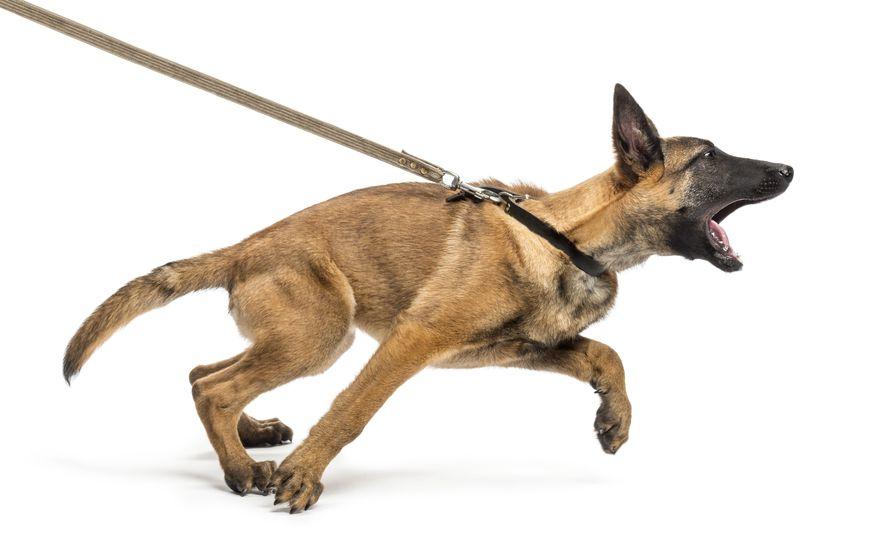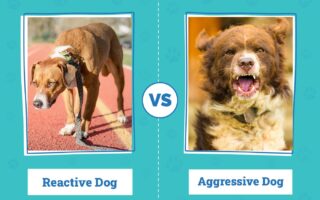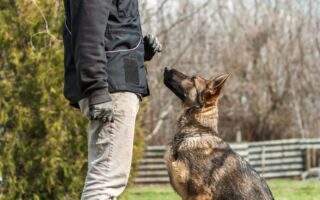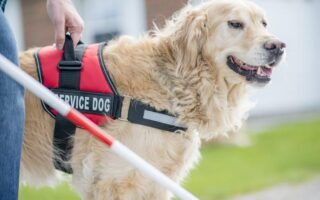Title: Unleashing Potential: A Guide to Leash Reactive Dog Training
In the vibrant tapestry of daily life, the bond between humans and their canine companions is often threaded with joy, loyalty, and adventure. Yet, for many dog owners, walks in the park can evolve from a leisurely stroll into a test of patience and control when confronted with leash reactivity. This behavior, marked by excessive barking, lunging, or growling at the sight of other dogs, can transform even the most serene environment into a scene of chaos. But fear not; the journey to a calm and confident walk is attainable. In this article, we’ll explore the nuances of leash reactivity, delving into the underlying causes and effective training strategies that can empower both dogs and their owners. Whether you’re seeking to enhance your walks or cultivate a more harmonious relationship with your furry friend, a deeper understanding of leash reactivity is the first step toward transformation. Join us as we unravel the world of leash reactive dog training and discover how patience, persistence, and positive reinforcement can lead to a more enjoyable experience for everyone involved.
Table of Contents
- Understanding Leash Reactivity and Its Triggers
- Effective Techniques for Leash Reactive Dog Training
- Creating a Customized Training Plan for Your Dog
- Building Positive Associations: The Key to Success
- Q&A
- To Conclude
Understanding Leash Reactivity and Its Triggers
Leash reactivity is often misunderstood, yet it plays a significant role in the behavior of many dogs during walks. This phenomenon can manifest when a dog becomes overly excited, anxious, or frustrated in the presence of certain stimuli. Triggers vary widely from dog to dog and can include:
- Other dogs: Your dog may react out of fear or aggression towards unfamiliar canines.
- People: Some dogs react when they see strangers, especially if they’re not socialized properly.
- Vehicles: Fast-moving cars can provoke a defensive stance in many dogs.
- Noises: Unusual sounds such as bikes or skateboards can heighten anxiety levels.
- Animals: Whether it’s a squirrel or a cat, smaller creatures often ignite a chase instinct.
Understanding these triggers is crucial as it allows for targeted training approaches. By identifying and addressing these specific situations, you can create a safe environment for your dog. Consider keeping a log of your dog’s reactions to various stimuli, noting the following:
| Trigger | Dog’s Reaction | Classified as |
|---|---|---|
| Other dogs | Barking & lunging | Fear-based |
| People | Growling | Aggressive |
| Vehicles | Cowering | Anxious |
| Noises | Startled & hiding | Fear-based |
This will help you and your trainer develop a plan that gradually desensitizes your dog, leading to a calmer and more enjoyable walking experience for both of you.
Effective Techniques for Leash Reactive Dog Training
Leash reactivity can be a challenging behavior to manage, but with patience and the right techniques, it’s possible to transform your dog’s response to stimuli. One effective method is desensitization, where you gradually expose your dog to their triggers from a distance. This can be paired with counter-conditioning, wherein you associate positive experiences—such as treats or praise—with the sight of other dogs or distractions. Start by observing your dog’s threshold: the distance at which they begin to react. As your dog learns to remain calm, gradually decrease this distance, allowing them to experience success in a controlled manner.
Another powerful technique is obedience training, which reinforces basic commands such as “leave it”, ”sit”, and “focus”. Consistency is key; practice these commands in various environments to help your dog learn to listen, even amidst distractions. Incorporate positive reinforcement; rewarding good behavior encourages your dog to repeat those actions. Utilizing a Martin Gale collar or front-clip harness can also help manage pulling and redirect their focus when they feel overwhelmed. For those looking to tailor their approach, consider creating a training schedule:
| Day | Activity | Duration |
|---|---|---|
| Monday | Desensitization Walk | 30 minutes |
| Wednesday | Obedience Commands Training | 20 minutes |
| Friday | Focus Exercises | 25 minutes |
Remember, the key to success lies in patience and consistency. Adjust your training techniques based on your dog’s progress, celebrating small milestones along the way. With proper guidance and strategy, you and your dog can overcome leash reactivity, leading to enjoyable walks and a stronger bond.
Creating a Customized Training Plan for Your Dog
Designing a training plan tailored to your dog’s needs is crucial, especially for leash reactive dogs. Begin by assessing your dog’s triggers; this may include other dogs, people, or moving objects. Once you identify these stimuli, craft a training strategy that focuses on desensitization and counter-conditioning. Your training sessions should include a gradual exposure to these triggers, rewarding calm behavior with treats or praise. Consider the following strategies for customizing your plan:
- Define Trigger Distance: Determine how close your dog can be to triggers without reacting.
- Set Measurable Goals: Establish short-term objectives, such as reducing barking or lunging by 50%.
- Incorporate Positive Reinforcement: Use treats or toys as rewards for calm behavior during encounters.
To maintain consistency, schedule regular training sessions throughout the week. Keep in mind that leash reactive behaviors typically stem from fear or frustration, so patience is key. Use a reliable training tool, such as a front-clip harness, to redirect your dog’s attention when a trigger approaches. Below is an example of a simple weekly training schedule that could help reinforce good behavior:
| Day | Activity | Duration |
|---|---|---|
| Monday | Desensitization Walk | 30 min |
| Wednesday | Focus Drills at Dog Park | 20 min |
| Friday | Controlled Introductions with Friend’s Dog | 30 min |
Building Positive Associations: The Key to Success
Creating a positive training environment is essential for overcoming leash reactivity in dogs. This can be achieved by consistently rewarding desired behaviors, making interactions enjoyable for both the dog and handler. Here are some effective strategies to foster positive associations:
- High-Value Treats: Use treats that your dog loves to reinforce calm behavior when encountering triggers.
- Gradual Exposure: Start with low-intensity situations to build confidence and reduce stress.
- Calm Environment: Work in a quiet area free from distractions to help your dog focus on you.
- Consistency: Regular practice and clear communication create a sense of security for your dog.
To track progress and adjust strategies, consider documenting your dog’s responses in a table format. This can help identify patterns and clarify what works best for your dog:
| Date | Trigger | Response | Training Tactic |
|---|---|---|---|
| 01/01/2023 | Other Dog | Barked | High-Value Treats |
| 01/03/2023 | Jogger | Calm | Gradual Exposure |
| 01/05/2023 | Child | Wagged Tail | Positive Reinforcement |
By building these positive associations, you pave the way for more effective training sessions that ultimately lead to a happier, more well-adjusted dog.
Q&A
Q&A on Leash Reactive Dog Training
Q1: What does it mean for a dog to be leash reactive?
A: Leash reactivity occurs when a dog shows aggressive or overly excited behavior towards other dogs, people, or distractions while on a leash. This reaction can look like barking, lunging, or even growling. The leash, which restricts the dog’s movement, can heighten their anxiety or frustration, leading to these reactions.
Q2: What causes leash reactivity in dogs?
A: Leash reactivity can stem from various factors, including fear, frustration, lack of socialization, or protective instincts. Some dogs may feel threatened by other animals or people they see while on walks, while others may become overly excited and react out of sheer exuberance. Understanding the root cause is key to addressing the behavior.
Q3: How can I identify if my dog is leash reactive?
A: Signs of leash reactivity can vary, but common indicators include intense barking, lunging toward the target, growling, or even attempting to escape the leash. If your dog appears hyper-focused on a person or another dog, or if they seem to be on high alert during walks, they might be exhibiting leash reactive behavior.
Q4: What are some effective training methods for leash reactivity?
A: Several techniques can help manage leash reactivity, including:
- Desensitization: Gradually exposing your dog to the trigger at a distance where they remain calm, rewarding them for positive behavior.
- Counter-conditioning: Changing your dog’s emotional response to the trigger by pairing it with something positive, like treats or play.
- Training commands: Teaching commands like “sit” or “look at me” can redirect your dog’s focus away from the distraction.
- Positive reinforcement: Rewarding calm behavior can help reinforce the idea that remaining composed yields positive results.
Q5: How can I prevent leash reactivity before it develops?
A: Early socialization is crucial. Exposing your puppy to various environments, people, and other dogs in a controlled and positive manner can help them build confidence and learn appropriate behaviors. Additionally, using a suitable harness or leash can provide better control during walks, helping to mitigate the chance of reactivity.
Q6: Is professional training recommended for leash reactive dogs?
A: While many dog owners can successfully train their dogs using self-guided methods, seeking professional help from a certified dog trainer or behaviorist can be extremely beneficial, especially in severe cases. Professionals can provide tailored strategies, hands-on guidance, and an objective perspective on the behaviors exhibited.
Q7: How long does it take to train a leash reactive dog?
A: The timeline for training a leash reactive dog varies greatly depending on the dog’s temperament, the severity of the behavior, and the consistency of training. Some dogs may show improvement within a few weeks, while others may require months of dedicated training. Patience, persistence, and a positive attitude can lead to significant changes over time.
Q8: What should I avoid when dealing with leash reactivity?
A: Avoid harsh corrections or punishment, as these can escalate anxiety and worsen the behavior. Additionally, don’t force your dog to face their triggers right away; this can lead to heightened stress or fear. Instead, prioritize a gradual, positive approach to help build your dog’s confidence.
Q9: Can leash reactivity be completely resolved?
A: While many dogs can learn to manage their leash reactivity effectively, some may always have a tendency towards certain behaviors. The goal of training is to equip your dog with tools to cope with their reactivity, allowing for calmer walks and enjoyable outings. With dedication and consistency, many owners find their dogs can lead well-balanced lives with manageable triggers.
Q10: Are there specific breeds more prone to leash reactivity?
A: Any breed can be leash reactive, but certain breeds with a strong prey drive or protective instincts may exhibit this behavior more prominently. Border Collies, Shepherds, and Terriers, for example, can sometimes be more reactive. Regardless of breed, every dog can benefit from consistent training and a tailored approach to address leash reactivity.
By understanding the nature of leash reactivity and employing positive training strategies, you can embark on a journey toward improved walks and a happier, more relaxed companion.
To Conclude
leash reactive dog training is both an art and a science, requiring patience, consistency, and a deep understanding of canine behavior. By unlocking the root of your dog’s reactivity and employing thoughtful strategies, you can transform your daily walks from stressful battles into enjoyable adventures. Each step forward—no matter how small—brings you and your furry friend closer to a harmonious relationship, built on trust and positive experiences. Remember, the journey may have its challenges, but with dedication and the right techniques, every outing can become a testament to the bond between you and your dog. Embrace the process, celebrate the progress, and soon you’ll find that the world is a much friendlier place for both of you on a leash.



